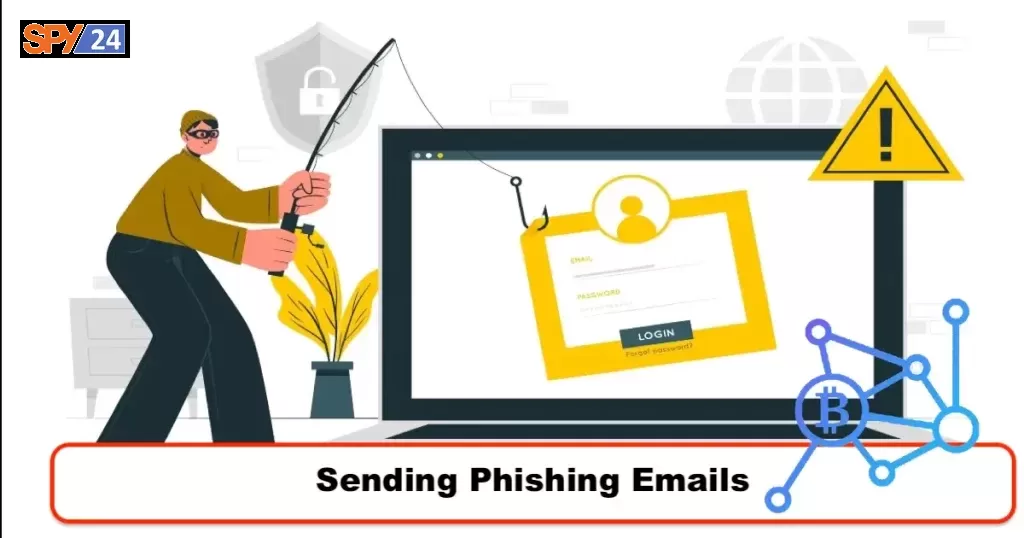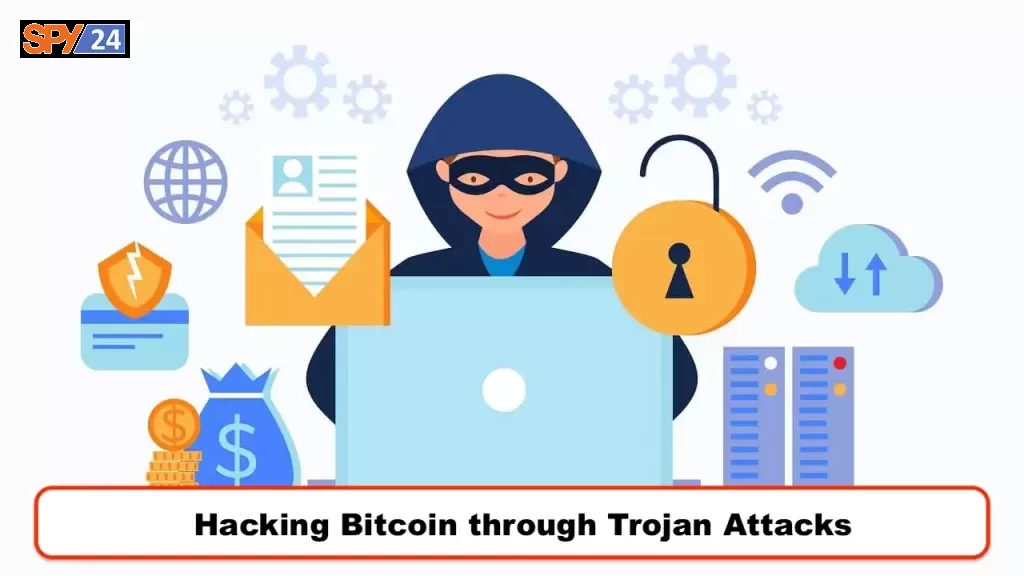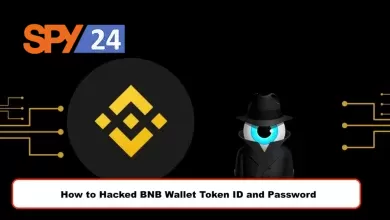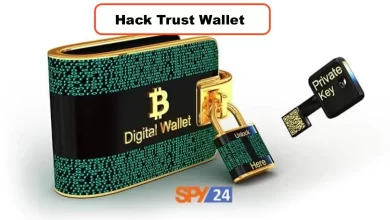How Bitcoin Can Be Hacked? Best Way and 100% Work

For the previous decade, cryptocurrencies such as Bitcoin have gradually increased in value and popularity. As a result, many people want to know how Bitcoin can be hacked. Bitcoin hacking is difficult and takes a certain amount of technical expertise. However, there are various methods for getting started with Bitcoin hacking, such as using online tools or specialized software. In this article, we will explain some best methods for hacking bitcoin and present strategies that have been tested and proven to work. So, if you’re ready to begin hacking Bitcoin for fun or profit, keep reading!
What Is Bitcoin?
Bitcoin is a decentralized digital currency that allows for peer-to-peer transactions without the need for intermediaries. It was invented by Satoshi Nakamoto and operates on a blockchain network. Transactions on the network are verified and recorded through cryptography, ensuring the security and transparency of the system. The total number of Bitcoins that can exist is limited to 21 million.

Mining is the process by which new Bitcoins are created and added to the network, and it is also a way to validate and secure transactions. As of 2023, Bitcoin is widely accepted as a form of payment by over 100,000 merchants and vendors around the world. In addition to being used for purchases, Bitcoin can also be traded for other currencies and assets.
Is Bitcoin Vulnerable to Hacking?
The answer to whether Bitcoin can be hacked is yes. Despite being a decentralized network that is believed to be secure, there have been instances of high-profile hacks on Bitcoin exchanges and wallets, leading to the loss of significant amounts of Bitcoins.
Hackers typically target Bitcoin exchanges and wallet providers, as they are centralized points of entry and exit for users and can store large amounts of Bitcoins, making them attractive targets. They may also attack individual users through malware or phishing attacks.

However, despite the potential for hacking, Bitcoin is still considered to be a secure system overall. This is due to the fact that hacking attempts are usually isolated incidents that do not impact the entire network, and the majority of Bitcoin users store their coins in personal wallets rather than on exchanges or with wallet providers. This makes it difficult for hackers to steal large amounts of Bitcoins at once.
How to Acquire Bitcoin Without Spending Money?
If you’re in search of free Bitcoin, there are several ways to go about it. The most widely known method is through Bitcoin faucets. These are websites that offer a small amount of Bitcoin in return for completing a task, which can range from filling out a Captcha to watching an advertisement.
Another option to obtain Bitcoin without spending any money is through gambling. There are many Bitcoin casinos available, and while the games they offer vary, most of them allow you to play with your Bitcoin balance. However, keep in mind that this comes with the risk of losing all your Bitcoin, so only gamble what you can afford to lose.

Lastly, you can also get free Bitcoin by participating in an airdrop. This is when a new cryptocurrency project distributes free coins or tokens to its community members. To be eligible for an airdrop, you typically need to hold another cryptocurrency, such as Bitcoin, in a specific wallet. Keep an eye out for any upcoming airdrops to take advantage of this opportunity.
The Largest Recorded Hack in Bitcoin History: The Mt. Gox Incident
The Mt. Gox hack was a significant event in the history of Bitcoin. The Japan-based Bitcoin exchange was the largest in the world at the time and was handling over 70% of all Bitcoin transactions. In February 2014, it was discovered that the exchange had been hacked and 850,000 Bitcoins had been stolen.
The exact details of how the hack took place are still not clear, but it is believed that the attackers may have gained access to the exchange’s private keys. This would have allowed them to transfer the Bitcoins out of the exchange’s wallet and into their own wallets.

The impact of the Mt. Gox hack was significant. The loss of 850,000 Bitcoins was a major blow to the Bitcoin community, and it led to a significant drop in the price of Bitcoin. Additionally, the hack raised concerns about the security of Bitcoin exchanges, and it led many people to question whether Bitcoin was a safe investment.
In the aftermath of the hack, Mt. Gox filed for bankruptcy, and the company’s assets were frozen. This led to a long legal battle, and it took several years for the creditors to receive any compensation. In the end, the creditors received only a fraction of their original investment.
How Bitcoin Can Be Hacked?

Hack a BTC Wallet
To successfully perform a hack on a Bitcoin wallet, it’s crucial to understand the basic structure and function of the wallets. A Bitcoin wallet is essentially a set of unique digital keys, made up of a public key and a private key. The public key is used for receiving Bitcoin transactions, while the private key gives you permission to access and spend the funds stored in the wallet.
Hacking into a Bitcoin wallet requires acquiring the private key, which can be done through various means such as exploiting vulnerabilities, utilizing malware, or tricking the wallet owner through social engineering. Once the hacker has obtained the private key, they can then use it to access the funds in the wallet and potentially steal them.
It’s important to note that hacking into a Bitcoin wallet is not a simple task and requires a high level of expertise and technical know-how. Despite this, if a successful hack is performed, it could result in the permanent loss of funds from the wallet, making it crucial for users to prioritize the security of their Bitcoin wallets. This means taking the necessary precautions such as using strong passwords, enabling two-factor authentication, and being vigilant of suspicious activity.
Installing a Keylogger – The Two Main Ways
Installing a keylogger is a technique used by cybercriminals to record and monitor a target’s keystrokes and steal sensitive information, such as passwords and credit card numbers. There are mainly two ways to install a keylogger, through social engineering and through malware attacks.

Social Engineering Method – Trickery and Deception
Social engineering involves tricking someone into installing the keylogger for you. This is achieved by sending the target an email that appears to come from a trusted source or creating a fake website that resembles a legitimate downloading site. Once the keylogger is installed, it starts recording the target’s keystrokes and transmitting them to the attacker.
Malware Method – Infecting the System
Another way to install a keylogger is through a malware attack. This involves infecting the target’s computer with a virus or Trojan horse that will install the keylogger without the target’s knowledge. Once the keylogger is installed, it will start recording the target’s keystrokes and sending them to the attacker.
Conclusion:
Installing a keylogger requires technical know-how and a certain level of caution, but if executed correctly, it can be an effective tool for stealing sensitive information.
Sending Phishing Emails
To carry out phishing attacks, hackers need to first obtain a list of potential victims, which they can do by purchasing email addresses or extracting them from websites. The attacker then creates a fake email that looks like it is from a trustworthy source, such as a financial institution or online platform. The email will include a link that redirects to a website that appears to be genuine but is actually under the control of the hacker. Once victims enter their login information on the fake site, the hacker gains access to their accounts.

Phishing emails can also be used to install malware on victims’ computers. The email includes an attachment that, once opened, infects the computer with malware. This gives the attacker remote control of the victim’s machine, allowing them to steal sensitive information or carry out further attacks. Phishing is a major concern and it’s crucial for individuals to be cautious of any emails they receive, even if they appear to be from a trustworthy source.
Downloading Fake Wallets
When looking to secure your Bitcoin holdings, it’s important to be cautious when choosing a wallet as there are many fake or substandard options available. The best way to avoid falling victim to these types of wallets is to only download them from reputable sources such as the official Bitcoin website, trusted exchanges, and well-established third-party websites. Before downloading a wallet, it’s advisable to do some research to determine its reputation by reading reviews and feedback from other users.
Once you have found a reputable source, make sure to download the correct version of the wallet that is compatible with your operating system. After downloading a reputable Bitcoin wallet, take the time to familiarize yourself with its features and functions to avoid potential scams or issues that may arise from using a fake or low-quality wallet. Additionally, it’s important to enhance the security of your wallet by enabling two-factor authentication and setting a strong password and always keeping a backup of your funds.
Impersonation and Phishing Scams
One of the most common tactics in hacking Bitcoin is pretending to be a company or individual. This can be accomplished by making a fake website or email that closely resembles the real one. When people try to log in or register an account with a company or person, they will unknowingly give their information to the hacker instead.
Another way to hack Bitcoin is through phishing sites. These are websites that appear legitimate but are actually designed to steal login information. Hackers often send out links to these phishing sites through email. Once someone enters their login information on the site, the hacker can then use it to access their account and steal their Bitcoin.
Hacking Bitcoin through Trojan Attacks
Another method of hacking Bitcoin is by targeting individuals with Trojans. This involves infecting their computers with malware that gives you remote control over their device. With this control, you can steal their Bitcoins.
One common way to do this is through a phishing attack, where you send an email that appears to come from a legitimate website or service, but actually contains a link to a malicious site. When the victim clicks on the link and enters their login information, you will have access to their account and any Bitcoins stored in it.

Another approach is to distribute malware-ridden files disguised as legitimate Bitcoin wallets. Once the victim installs these wallets and tries to use them, their Bitcoins will be directed to your wallet instead.
Once you have control of the computer or wallet, you can either transfer the Bitcoins for profit or hold onto them and demand a ransom payment in exchange for returning access to the computer or wallet.
Browser Extensions
If you want to explore the world of Bitcoin hacking, one of the simplest ways to do so is by incorporating browser extensions. There are various extensions available that can enhance your hacking efforts, and the steps to install them will be outlined below.
By installing these extensions, you will have access to a range of tools that will make your hacking attempts more efficient. For instance, you will be able to view the balance of a Bitcoin address instantly, as well as keep track of cryptocurrency prices in real-time.
Circumventing Two-Step Verification
To hack Bitcoin, circumventing two-step verification is a highly effective strategy. Two-step verification is a secondary layer of protection for online accounts. While it can be challenging to bypass, it is possible with the proper tools and knowledge.
Phishing attacks are the most typical method of bypassing two-step verification. This is accomplished by creating a fake login page that resembles the genuine login page for a specific website. When users enter their information on the fake page, the attacker receives it instead of the authentic website.

Another way to bypass two-step verification is by using a third-party authentication app. These apps provide a single location for users to store their credentials for multiple websites. However, many of these apps have been hacked in the past, so it is recommended to only use them with websites you have full trust in.
Deceiving False Advertisements
One way to compromise Bitcoin is by tricking individuals with false advertisements. This can be executed by designing a counterfeit website or online ad that appears legitimate but is actually a scam. People are led to believe they are receiving something valuable, but in reality, they are giving away their Bitcoin for nothing.
Phishing is another technique used to hack Bitcoin. This involves sending an email or message that appears to be from a reputable source but is actually a trap. The objective is to get people to click on a link that takes them to a fake website where they enter their sensitive information, including their Bitcoin wallet address and password. Once you have obtained this information, you can access their funds and steal their Bitcoins.
Another common method of hacking Bitcoin is through malware. This involves creating or installing a virus on someone’s computer, which gives you control of their Bitcoin wallet and enables you to steal their coins. This can be accomplished by sending an email with a malware-infected attachment or downloading a harmful program from the internet.
How Does a Blockchain Get Hacked?
A blockchain can be attacked through various methods, including:

- 51% Attack: This is a type of attack in which a group of miners controls more than 50% of the computing power of a blockchain network, allowing them to manipulate the network by adding blocks that don’t follow the consensus rules, or by reversing already confirmed transactions.
- Double Spending Attack: This type of attack involves a malicious actor attempting to spend the same funds twice, by sending the same transaction to two different nodes in the network simultaneously.
- Sybil Attack: In this attack, a malicious actor creates multiple fake identities in the network to control a significant portion of the computing power and influence the network’s decision-making process.
- Eclipse Attack: This type of attack involves a malicious actor isolating a node from the rest of the network, allowing them to control the information that the node receives and potentially manipulate the node into making malicious transactions.
- Routing Attack: In this attack, a malicious actor intercepts or alters the transmission of data between nodes in the network, potentially causing a denial-of-service attack or manipulating the network’s decision-making process.
These are some of the most common ways in which a blockchain can be attacked, but there may be other potential attack vectors that haven’t been discovered or fully understood yet.
FAQs:
Can Bitcoin be hacked?
Yes, Bitcoin can be hacked. Hackers usually target Bitcoin exchanges and wallet providers or individual users through malware or phishing attacks. However, the majority of Bitcoins are stored in personal wallets, making it difficult for hackers to steal large amounts at once.
How can you acquire Bitcoin without spending money?
There are several ways to acquire Bitcoin without spending money, such as through Bitcoin faucets, gambling, and participating in an airdrop.
What was the largest recorded hack in Bitcoin history?
The largest recorded hack in Bitcoin history was the Mt. Gox hack in 2014. The Japan-based exchange was handling over 70% of all Bitcoin transactions at the time and 850,000 Bitcoins were stolen. The exact details of the hack are still unclear.
How can Bitcoin be hacked?
Bitcoin can be hacked by obtaining the private key of a Bitcoin wallet. The private key can be obtained by exploiting vulnerabilities, utilizing malware, or tricking the wallet owner through social engineering. Hacking a Bitcoin wallet requires a high level of expertise and technical know-how.
Is it possible to hack a Bitcoin exchange?
Yes, it is possible to hack a Bitcoin exchange. Hackers typically target centralized exchanges and wallet providers as they can store large amounts of Bitcoins, making them attractive targets.
What are the most common ways to hack Bitcoin?
The most common ways to hack Bitcoin are by exploiting vulnerabilities, using malware, and tricking the wallet owner through social engineering.
What is mining and how does it work in Bitcoin?
Mining is the process by which new Bitcoins are created and added to the network. It also serves to validate and secure transactions on the network. Miners use powerful computers to solve complex mathematical problems and receive newly minted Bitcoins as a reward.
What is a Bitcoin faucet?
A Bitcoin faucet is a website that offers a small amount of Bitcoin in return for completing a task, such as filling out a Captcha or watching an advertisement.
What happened to Mt. Gox after the hack?
After the hack, Mt. Gox filed for bankruptcy, and the company’s assets were frozen. This led to a long legal battle and it took several years for the creditors to receive any compensation, which was only a fraction of their original investment.
The Bottom Line
In conclusion, Bitcoin is a decentralized digital currency that has gained significant popularity and value in the past decade. While it is considered to be secure overall, it is still vulnerable to hacking, particularly when it comes to centralized points of entry and exit such as exchanges and wallet providers. Hacking attempts on Bitcoin can result in significant losses of the currency, as was seen in the case of the Mt. Gox hack, which was the largest recorded hack in Bitcoin history. To acquire Bitcoin without spending money, there are several methods, including Bitcoin faucets, gambling, and airdrops. To successfully hack a Bitcoin wallet, a hacker needs to obtain the private key, which can be done through various means such as exploiting vulnerabilities or utilizing malware. However, it is important to note that hacking into a Bitcoin wallet requires a high level of technical expertise and is not a simple task. Overall, while Bitcoin is vulnerable to hacking, it remains a secure system and continues to be widely accepted as a form of payment and traded for other currencies and assets.
SPY24 Install application free The Most Powerful Hidden Spying App to Monitor Android, IOS Cell Phone & Tablet Device Remotely. Best Android Parental Control App for Kids & Teens Online Safety.
Now take the liberty to monitor Android, and IOS devices with exclusive features better than ever before Monitor all Voice & Text Messages Communication records, Listen to & Watch Surroundings in Real-time Unleash Digital Parenting with Android, IOS Spy App Spy (Surround Listing & Front/Back Camera Bugging) IM’s VoIP call recording on Android OS 13 & above With 250+ Surveillance Tools at your fingertips using Android Tracking & Parental Monitoring Software.




